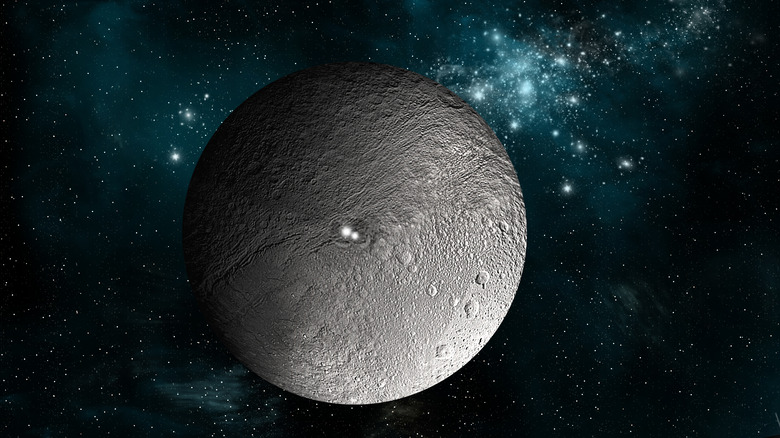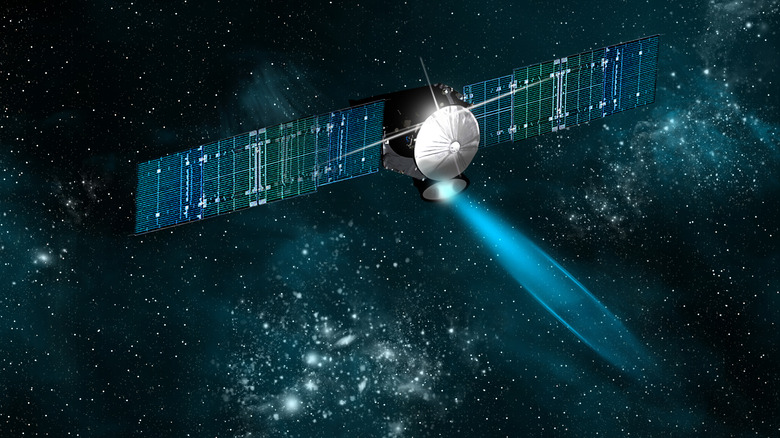The One Object In Our Solar System That Has Been Both A Planet And An Asteroid
There are many things whizzing around our solar system besides the planets. There are asteroids and comets. Most of the time they are all properly classified, but there are times that things can change. According to Space, Pluto went from being a planet to a dwarf planet, which changed the way people remembered the order of the planets — from "My Very Eager Mother Just Served Us Nine Pizzas" to "My Very Eager Mother Just Served Us Nachos," which disappointed pizza lovers.
Pluto is not the only one to have its designation changed. NASA tells about Ceres, which went from being an asteroid to a dwarf planet. Ceres was first deemed an asteroid in 1801 when the astronomer Giuseppe Piazzi saw it through a telescope. It resides in the asteroid belt, so it makes sense that it was first considered to be an asteroid. This was its classification for the next 205 years, until scientists changed it to a dwarf planet.
The Dawn space probe and Ceres
Another thing about Ceres, according to National Geographic, is that it is geographically alive. A 2015 mission where a probe named Dawn found water on its surface — a briny kind. Apparently, running water may have also froze on it, causing hills and mountains of ice. Scientists also think that there is a deeper reservoir of water under the surface. There may have been conditions for life at one point, and it may even have some clues about its past on it.
NASA has more facts about Ceres, whose size at 296 miles is smaller than Pluto and the Earth's moon. However, it is still the biggest thing in the asteroid belt between Mars and Jupiter, which is why it became a dwarf planet instead of an asteroid. Its orbit takes a little over four-and-a-half Earth years. It rotates pretty fast, though, in a mere nine hours. The name comes from the Roman goddess of grain crops and harvest — cereal also comes from her name.
Ceres remains a place of interest for scientists, since they know that it is one of the denizens of the solar system that has markers for life. They will likely decide to visit it again in the not-too-distant future to learn more about it and build upon the information that they got from Dawn. As far as its designation goes, chances are extremely low that its status will ever be changed back to an asteroid.

